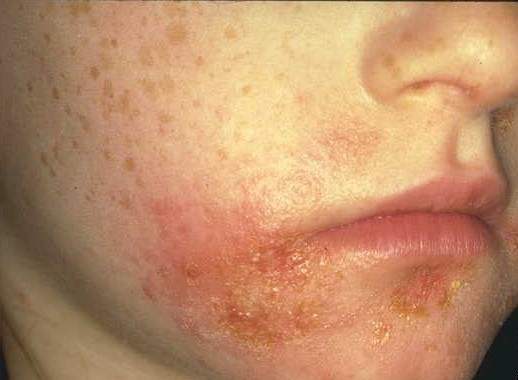ATOPIC ECZEMA

Atopic eczema is very common and affects all ages ranging from babies, children to middle age adults and senior citizens. Any one that come into contact long enough will have their skin to break down to have atopic eczema. Atopic eczema can be hereditary but most often the 'lifestyles of the family' are learned which causes a generation of members to continue with atopic eczema. thought to be a hereditary condition.
It is estimated that one in three people are affected by atopic eczema. However, the development of atopic eczema in a person who has a predisposition to it is likely to be greatly affected by their surroundings.
Atopic symptoms are itchy dry skin with redness. Sometimes when the skin becomes dry enough to crack, the body serum weeps out to make a perfect moist area for bacteria to grow.
Itchiness can affect the atopic eczema patient at work, in school, while asleep as well as socially. And sometimes clothing and bedding is messed up. The best Atopic Eczema treatment would be Eczema-Ltd III for solving your atopic eczema itchy skin without risk with their 100% refund when returned within 120 days.Atopy occurs where an individual inherits the capacity to produce excessive antibodies called immunoglobulin E (IgE). These antibodies are particularly aggressive and attack foreign substances that enter the body. Eczema, asthma and allergic rhinitis are the most common atopic conditions. These antibodies exist to defend the body against attack. In atopic eczema the large number of antibodies are encountering alien substances or allergens and reacting to them. The reaction causes inflammation and itchiness. Allergens include dust, pollen, chemicals or food and drink.
The role of allergy to dust mites, pets and food in atopic eczema is controversial. In a high proportion of sufferers, the application of a dust mite allergen to the skin will worsen their condition. The condition of a child may improve in hospital where mite counts are low. It is thought that environmental exposure and lifestyle may be as much a factor in the development of childhood eczema as genetic factors. With atopic eczema, it is believed that a predisposition to the condition is inherited and it is then triggered by allergens.
In the Western world allergies have become a growing problem. The changes in society that may be impacting on the incidence of allergies include: the levels of nitrogen oxides (from diesel engines), ozone in the air, central heating and double insulation in homes, soft furnishings, and fumes from gas cookers, sprays and cigarettes.
The role of food allergy is also controversial. The most reliable means of establishing a food allergy is to keep a food diary and then to eliminate the suspected item from the diet. If the eczema improves, it can be re-introduced. If the condition worsens again, this provides reasonable proof of the cause.
Treatments may include emollient creams to maintain skin hydration and to reduce inflammation and softens and soothes the skin to make it softer. They are usually produced from a combination of water, oil, fat and wax. They are an essential element in the successful treatment of the dry skin found in eczema, and are safe and effective. However, they are often under used.
One of the most pronounced features of atopic eczema is very dry skin that is sensitive. When this dryness becomes extreme cracks appear in the skin that can be extremely sore. For example, when this occurs on the backs of the knees it is very difficult to walk. If the skin cracks at the side of the mouth, it is difficult to talk. It is therefore understandable; that people with the condition can become irritable and stressed because of the discomfort they are enduring. The importance of routine skin care should not be underestimated.
For more information see Atopic Dermatitis
